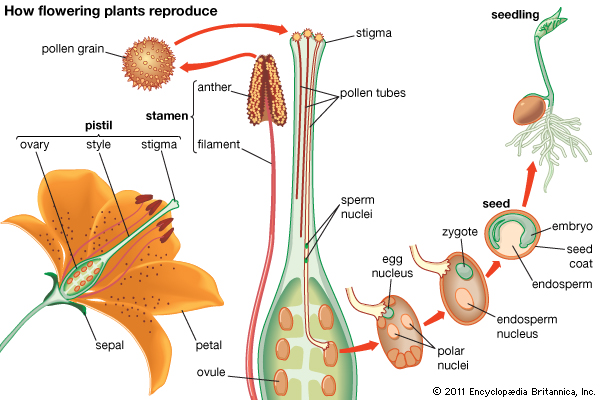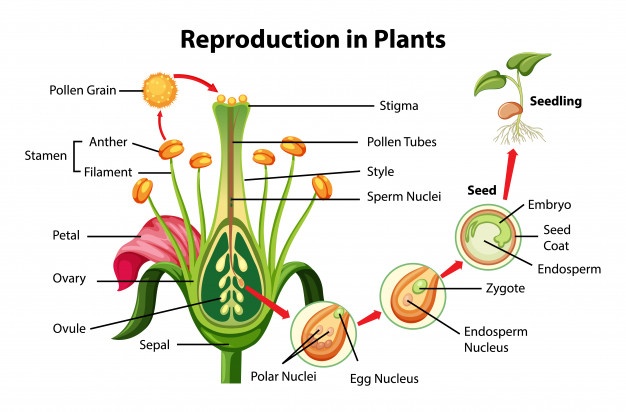Reproduction in plants is the process by which new individual plants are produced or propagated. There are two basic modes of plant reproduction: sexual, involving the fusion of male and female gametes to form a zygote; and asexual, involving one plant producing new individuals without the fusion of gametes (vegetative reproduction).
The reproduction of plants is achieved through two different means. The first mode of plant reproduction is sexual reproduction, where male and female gametes fuse to form a zygote. The second method is asexual reproduction, which is the acquisition of genetic material by an organism. This is done through mitosis, an individual cell dividing and taking a set of DNA into its own daughter cells. Through the aforementioned two methods, any combination of genes can be passed on, hence genetic variability.

Understanding various plants’ traits helps us better understand and grow different types of plants. For example, some plants can be considered invasive because they cannot reproduce in the areas in which they live. These are plants that grow and spread rapidly due to the lack of natural barriers. While they do not impact the surrounding environment as quickly as other invasive species, they do disrupt the native vegetation.
Another way in which plants can be studied is through observations of the plant’s environment. This can be done through natural resources like tree canopies. Tree canopies have beneficial ecological effects by recycling water, reducing the rate of erosion, and producing oxygen.
By studying different types of plants, scientists gain valuable knowledge that allows them to further their understanding of plant physiology. In essence, studying plants allows scientists to understand and develop better agricultural and construction methods.
Being able to view plants under a microscope allows researchers to find the morphology of a plant without damaging or contaminating the plant itself. For example, researchers can detect various pests in a garden without harming the plant itself.
On the other hand, only a portion of the chlorophyll in a plant is used for photosynthesis. The remainder of the chlorophyll is reserved for chemical structures. These are the proteins that are in charge of nutrient assimilation. Through this method, researchers can use molecular and physical tools to better understand the chlorophyll in plants.
Vegetation and floral structures are responsible for the various aesthetic benefits to the Earth. As humans continue to encroach on the Earth’s natural habitats, understanding and maintaining these habitats is necessary for maintaining the delicate balance between humans and other species.
To solve more doubts related to science do check out the doubt buddy app. It is one of the best doubt-solving apps in India and gives you instant solutions. It covers all subjects from class 6th to 12th and also caters to students who are preparing for competitive exams like NEET, JEE, etc.
Download the doubt buddy app: https://play.google.com/store/apps/details?id=com.doubtbuddy.student&hl=en_IN&gl=US
Check out more articles from us: https://blog.doubtbuddy.com



